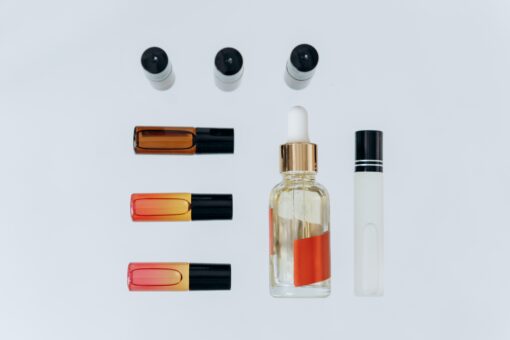CBD Skin Care Products: How Do They Work?
Just a decade back, many nations legalized CBD, and thus it is now commonly available as a health supplement. People primarily use it to improve mood, reduce a sense of anxiety, improve sleep, and get rid of mild body aches. However, its topical use quickly gained popularity as people realized its unique benefits for skin health.
The increasing use of CBD for various skin conditions led to significant clinical research into the subject. Researchers wanted to understand if it truly works or most such effects are placebo. Additionally, researchers also wanted to understand the underlying mechanism of action.
It would be correct to say that the topical benefits of CBD have come as a surprise to experts. But, surprisingly enough, they have found it beneficial in their tests, and they also discovered that it works in multiple ways.
What Is the Science Behind CBD Health Benefits for Skin?
Researchers knew that CBD helps in various health conditions due to its impact on the endocannabinoid system (ECS). Science has discovered two kinds of endocannabinoid receptors, CB1 and CB2. They also found that CB1 receptors are abundant in the brain. In comparison, CB2 receptors are abundant in peripheral organs, including the skin.
ECS system is quite complex, and science has not fully discovered its role in health and ailments. However, they know that body also produces many cannabinoids to influence this system and control various body activities. Thus, ECS plays an important role in brain health and appetite control, regulating multiple metabolic activities, immunity, and skin health.
Figure 1 Image source: Río C del, Millán E, García V, Appendino G, DeMesa J, Muñoz E. The endocannabinoid system of the skin. A potential approach for the treatment of skin disorders. Biochemical Pharmacology.
Studies especially support the use of CBD for reducing sebum production and skin inflammation. In addition, they have identified numerous underlying mechanisms. Thus, its prolonged use may considerably help manage acne.
CBD also appears to improve moisture retention by skin cells, and this action of CBD is independent of other moisturizing components often added to various skin care products. Thus, a study found that CBD increases the production of aquaporin-3 in the skin, which plays a vital role in moisture retention.
CBD is also suitable for other minor skin issues and even prevents skin damage due to infections, toxins, and irritants. It appears to improve skin barrier function, stimulate healing processes, and control local inflammation. In addition, CBD helps regulate the proliferation of keratinocytes.
CBD also has a calming effect on the skin. In addition, it may help prevent hypersensitive reactions. Thus, modulating ECS may help manage skin allergies, atopic dermatitis, eczema, and similar skin conditions.
Further, activation of CB1 and CB2 receptors may help prevent skin scarring and promote wound repair.
What Ingredients in Particular Makes CBD Good for Skin Problems?
CBD cosmetics are good, but the skin is quite a complex organ. Thus, combining CBD with other ingredients may have much more significant benefits for skin care. Therefore, adding other ingredients may boost the potential of CBD skin care products.
Plant oils
Various plant oils like argan oil, jojoba oil, coconut oil, avocado oil, and grapeseed oil can act as carrier oils and extend the benefits of CBD products for skin care. Most plant oils have a moisturizing effect. They also suppress bacterial growth and promote skin healing.
Botanicals or herbal extracts
It is also good to combine it with other botanicals like echinacea, daffodil, rose extract, and many more. Here the choice is almost unlimited; thus, one may choose botanical extract by keeping in mind the focus of skin care products. For example, some products may be for reducing scarring, others for acne, some to reduce dryness, and so on.
Collagens
It is a protein that boosts the production of connective tissues. In addition, skin and joints are naturally rich in collagen. Thus, its topical application may help improve skin elasticity.
Coq10
It is suitable for boosting cellular metabolism. It is one of the most potent antioxidants. In addition, it has a soothing effect on the skin.
Emollients
These are usually synthetic substances, but they are pretty good for holding moisture into the skin. However, many emollients are of natural origins, too. Thus, plant oils, shea, fatty acids, lecithin, triglycerides are some of the examples. Emollients are known to improve skin moisture.
Glycerine
It helps maintain skin softness and keep it moisturized.
Hyaluronic acid
It is naturally present in the skin, and its concentration becomes low with aging. These days it is produced synthetically and is often added to cosmetics to restore and hydrate skin. It also helps reduce skin wrinkles.
Parabens
These are synthetic preservatives. Although many believe that these chemicals are toxic, that is far from true. They can be pretty safe when used in smaller amounts. Manufacturers of CBD topicals would only add them in small quantities as a preservative.
Silicones
They help improve skin texture. In addition, silicones have cosmetic value as they make skin silky and smooth. Although these benefits of silicones are superficial, but then, silicon is quite an inert and safe material for topical use. Some of the silicones commonly used are dimethicone, Cyclopentasiloxane, and many more.
Vitamin E
It is an excellent one of the safest antioxidants for topical use. In addition, vitamin E help reduces skin damage due to toxins.
Zinc oxide
Zinc oxide and titanium dioxide are the non-irritating sunscreens of choice. They are pretty inert and work by blocking the sun rays.
Can CBD Be Absorbed Through the Skin?
Yes, CBD can be absorbed through the skin. Moreover, the oil-based formulations are generally better when it comes to transdermal application. However, topical CBD would reach the bloodstream at a much slower pace. It means the need for multiple applications to gain maximum benefits. Generally, it may take anywhere between 24 to 72 hours to achieve maximum benefit through this route.
However, it is good to know that the transdermal route also has certain benefits. For example, topical CBD won’t undergo first-pass metabolism. Thus, it may even have better systemic effect on prolonged use than oral CBD.
Since skin absorbs CBD well, experts believe many of its benefits for skin health could be due to its systemic effect. For example, it may help improve skin health by reducing anxiety and stress.
How Are CBD Skin Care Products Made?
Producing CBD skin care is pretty simple as it is primarily about mixing various ingredients. However, there are still some steps involved in manufacturing these products.
First, start by deciding whether a product would be oil-based or water-based, as it would determine what kind of CBD to choose. CBD is available both in lipid-soluble and water-soluble forms.
Next, decide whether you want to use CBD isolate or CBD distillate. CBD distillate is a broad-spectrum CBD with some added benefits. However, CBD isolate has a better safety profile and is less likely to cause allergies.
Subsequently, decide on the carrier oil to use, like coconut oil, avocado oil, olive oil, and so on, if you have chosen to move forward with an oil-based skin care product. Generally, an oil base is preferred for topical use, as lipids have additional benefits for the skin, and lipid-soluble CBD absorbs well into the skin.
Further, decide about the additional herbals, botanical, and other components to add to the product. This will help improve the benefits of the product. The choice of other herbals would depend on what segment a person is planning to focus on, like acne, anti-aging, moisturizing, anti-scarring, etc.
Finally, all the ingredients are mixed in special mixing machines, producing the final product. After this, the product is ready for packaging. Mixing and packing would generally require the use of specialized equipment. However, for small-scale production, semi-automatic and smaller equipment are also available.
Once the product is ready, one may need to get it certified both for its content of active ingredients and to establish its safety. And finally, the product is ready for commercialization.
If you are interested in knowing more about how to produce natural range of skincare products that can stand out from the competition, contact us, we would be glad to share our expertise.


